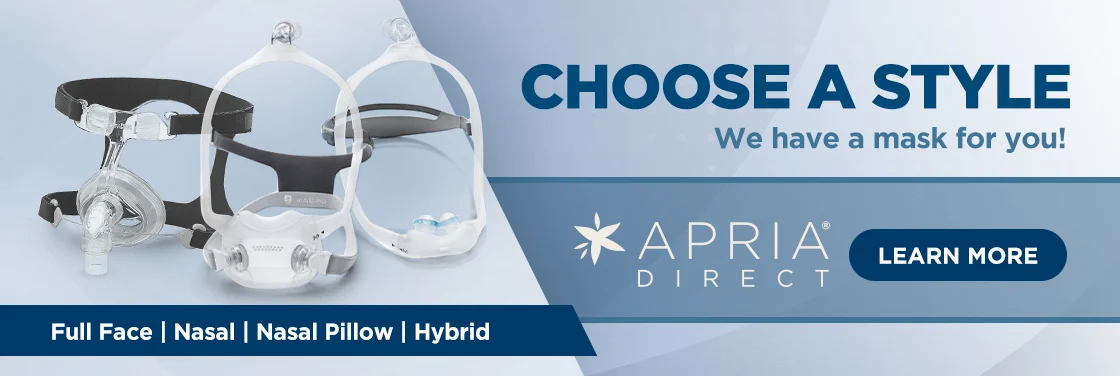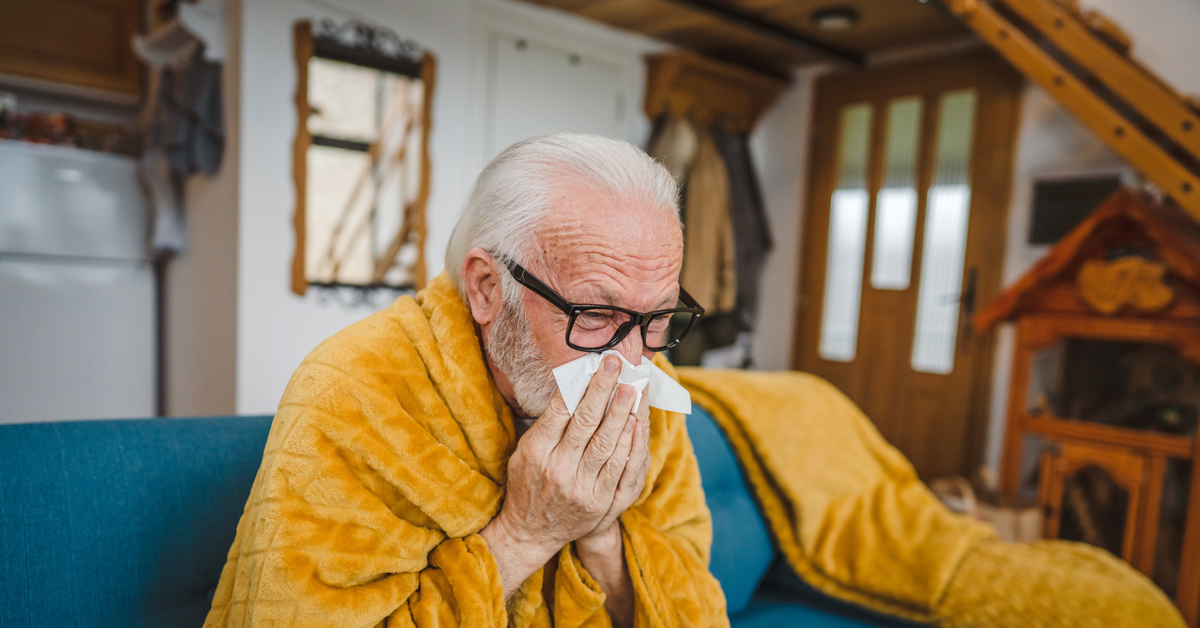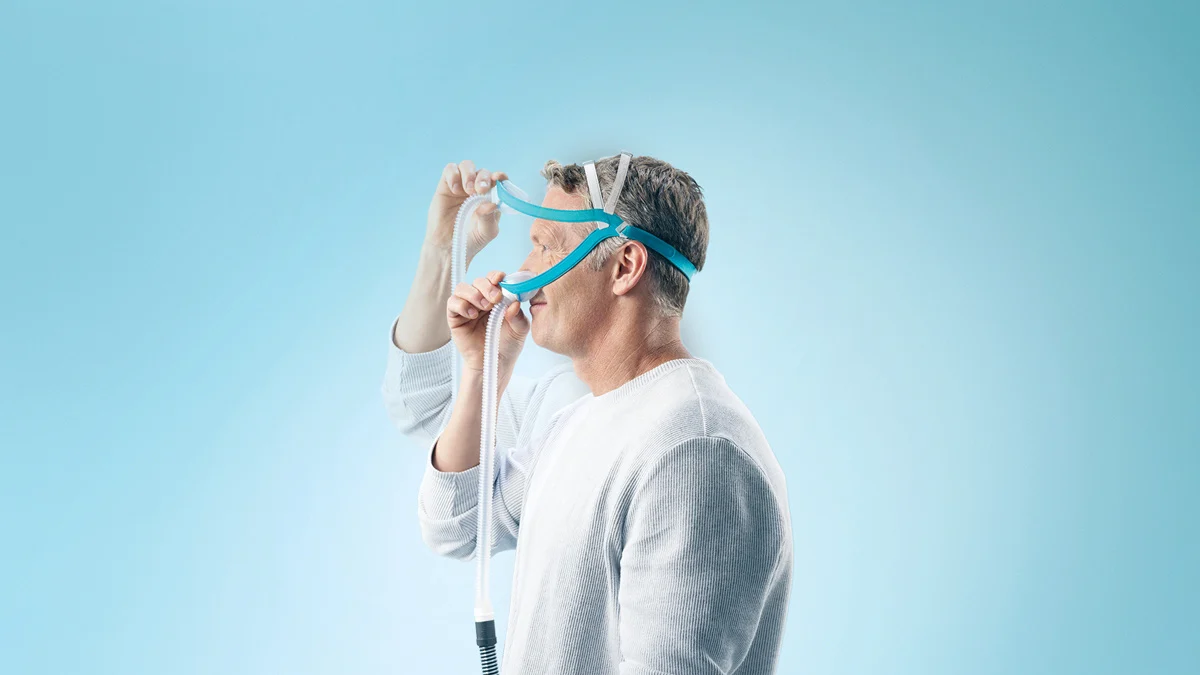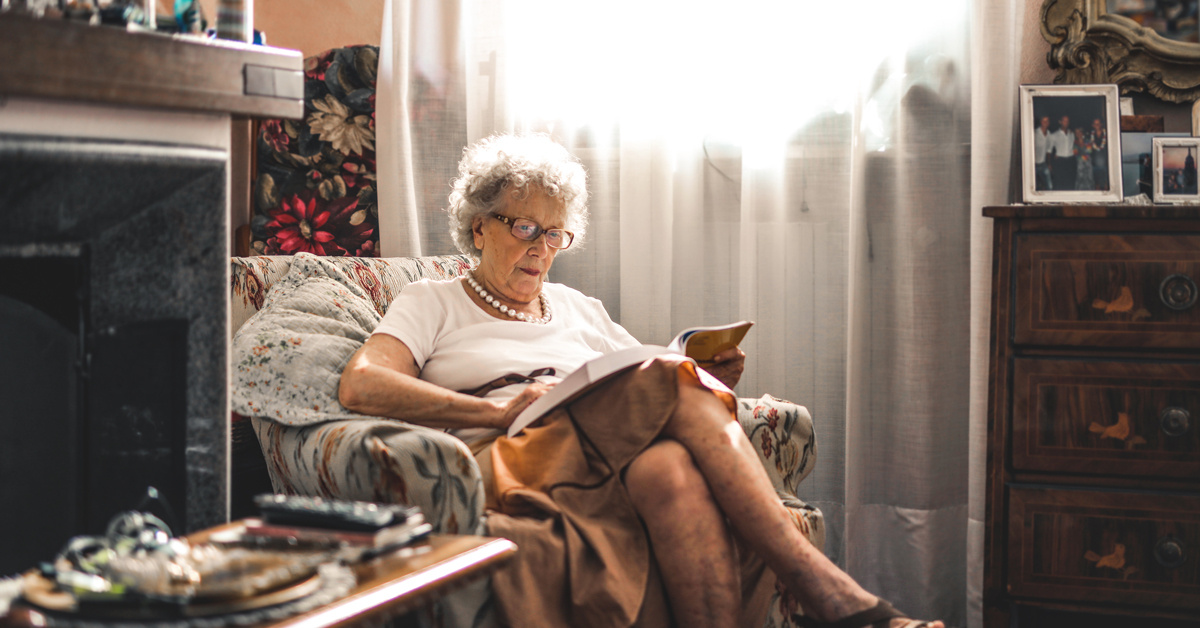How Do They Work? What Are Their Similarities? And How Are They Different?
Two of the most popular and effective treatments for breathing disorders such as sleep apnea are CPAP (continuous positive airway pressure) and BiPAP (bilevel positive airway pressure).
As a leader in the management of sleep apnea and other breathing disorders, we help many people affected by these disorders. And often, they don’t understand the difference between CPAP and BiPAP.
Says Robert Miller, Apria Healthcare Vice President of Sleep Business, “It is important for you to understand the similarities and differences between CPAP and BiPAP in order to achieve the best clinical results and long-term adherence.”
What Are the Similarities between CPAP and BiPAP?
First and foremost, both therapies can help improve the quantity and quality of your sleep—and, as a result, your overall well-being.
Each keeps your airways open as you sleep to ensure your body is supplied with the oxygen it needs for optimal function. And both reduce your risk for a number of health issues, such as diabetes, heart disease, and stroke.
For both CPAP and BiPAP, you wear a mask that fits comfortably over your nose or mouth as you sleep. The mask is connected to a machine by your bed that delivers pressurized air to keep your airways open to ensure normal breathing and better sleep.
Both CPAP and BiPAP are non-invasive therapies, meaning they don’t require surgery or the cutting of skin. Both also differ from mechanical ventilators, where a tube is inserted in your throat to help you breathe when you can’t on your own.
Both CPAP and BiPAP require a prescription from your doctor. To confirm if you have a sleep disorder such as sleep apnea, your doctor will prescribe a sleep study.
CPAP and BiPAP machines are available for home use and travel.
What’s the Main Difference Between CPAP and BiPAP?
Basically, how they deliver pressurized air.
CPAP (continuous positive airway pressure)
CPAP delivers a constant flow of air at one pressure setting during both inhalation and exhalation to keep airways open. This prevents pauses in breathing as you sleep, a primary symptom of sleep apnea.
CPAP machines offer an adjustable pressure setting that delivers between 4 to 20 cm H2O (which stands for centimeters of water pressure). For most people, the average setting is between 8 to 10 cm H2O.
CPAP is the most extensively studied and prescribed therapy for sleep apnea, with more than 8 million users in the United States.
BiPAP (bilevel positive airway pressure)
CPAP machines maintain the same pressure while you inhale and exhale. Some people find the constant single pressure uncomfortable to breathe, especially when they exhale.
For this reason, BiPAP devices are a valuable alternative. BiPAP delivers air at two alternating levels: a higher pressure for when you inhale, and a lower pressure for when you exhale. Because BiPAP uses two pressures, for some patients it is more like natural breathing, which many people with sleep apnea find more comfortable.
BiPAP machines have a typical pressure range of 4 to 30 cm H2O.
What Conditions Are Appropriate for CPAP and BiPAP?
CPAP is often prescribed for:
- Obstructive sleep apnea (OSA), the most common form of sleep apnea. OSA happens when the airway at the back of the throat becomes blocked, causing a temporary lapse in breathing. This can happen hundreds of times during the night
- Infants born with poorly developed lungs
BiPAP is often prescribed for:
- People who don’t do well on CPAP
- Obstructive sleep apnea (OSA)
- Central sleep apnea (CSA), a condition where your brain doesn't send proper signals to the muscles that control breathing because of problems with your body’s central nervous system. So you make no effort to breathe, leading to slower, shallower breathing.
- People with COPD (chronic obstructive pulmonary disease), congestive heart failure, and coronary artery disease
- People who have difficulty breathing, low oxygen levels, or need post-operative care
What Are the Benefits of CPAP and BiPAP?
Regularly using a CPAP or BiPAP machine can help:
- Improve sleep
- Increase energy and alertness
- Produce a better mood and attitude
- Protect heart health
- Eliminate snoring
- Manage blood pressure levels
- Reduce daytime sleepiness
- Improve productivity at work, home, or school
What Are the Side Effects of CPAP and BiPAP?
Both CPAP and BiPAP deliver pressurized air and require the use of a mask, which may cause the following:
- Feelings of claustrophobia
- Runny nose, nosebleeds, nasal congestion
- Dry mouth
- Skin irritation
- Feeling bloated
- Headaches
Your doctor can help you resolve these issues to ensure your CPAP or BiPAP therapy is as comfortable as possible.
What About Cost and Insurance?
BiPAP machines are more expensive than CPAP machines because of their increased complexity. Both CPAP and BiPAP are generally covered by most health insurance plans, including Medicare and Medicaid. Your specific insurance company and/or medical provider can answer your questions about payment for this treatment.
CPAP or BiPAP? Which Is Best For You?
Apria’s Robert Miller concludes, “Both CPAP and BiPAP are therapies that have been proven in use with millions of people being treated for sleep disordered breathing. But depending on the severity of your sleep apnea and if you have any underlying conditions, it’s always important to consult with your doctor.”
It’s the best way to ensure you get the device you need to help you get the sleep you need.
References
1. Summer, J. (Updated 2023, August 9). BiPAP vs CPAP. Sleep Foundation. https://www.sleepfoundation.org/cpap/cpap-vs-bipap.
2. (Updated 2023, May 10). BiPAP. Cleveland Clinic. https://my.clevelandclinic.org/health/treatments/24970-bipap.
3. (Updated 2021, November 9). CPAP Machine. Cleveland Clinic. https://my.clevelandclinic.org/health/treatments/22043-cpap-machine.
4. (Updated 2022, March 24,) CPAP. National Heart, Lung, and Blood Institute. https://www.nhlbi.nih.gov/health/cpap#:~:text=CPAP%20(continuous%20positive%20airway%20pressure,infants%20who%20have%2
underdeveloped%20lungs.
5. Cherney, K. (Updated 2022, March 30). Differences Between CPAP, APAP, and BiPAP as Obstructive Sleep Apnea Therapies. Healthline. https://www.healthline.com/health/apap-vs-cpap.
6. SimpleNursing Editorial Team. (2023, March 20). BiPAP vs CPAP Therapy: What’s the Difference? SimpleNursing. https://simplenursing.com/bipap-vs-cpap/#:~:text=The%20main%20difference%20between%20BIPAP,pressure%20throughout%20the%20breathing%20cycle.
7. Llamas, M. (Updated 2023, August 4). CPAP vs. BiPAP. Drugwatch. https://www.drugwatch.com/philips-cpap/cpap-vs-bipap/.
LEGAL DISCLAIMER: Material in this newsletter is provided for general health education and informational purposes and to provide references to other resources only; it may not apply to you as an individual. While Apria Healthcare believes that the information provided through this communication is accurate and reliable, Apria Healthcare cannot and does not make any such guarantee. It is not intended to be a replacement for professional medical advice, evaluation, diagnosis, services or treatment (collectively, “medical treatment”). Please see your healthcare provider for medical treatment related to you and your specific health condition(s). Never disregard medical advice or delay seeking medical care because of something you have read on or accessed through this website. Reading this newsletter should not be construed to mean that you have a healthcare provider/patient relationship.


.png)



